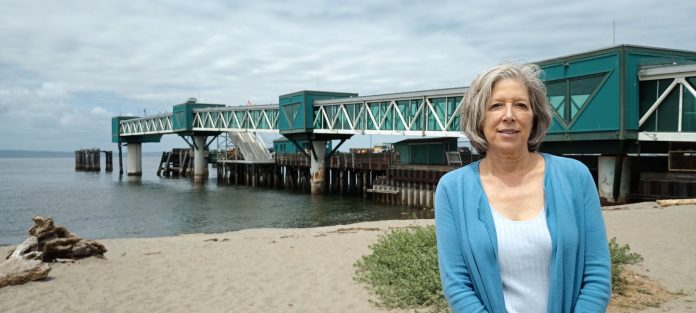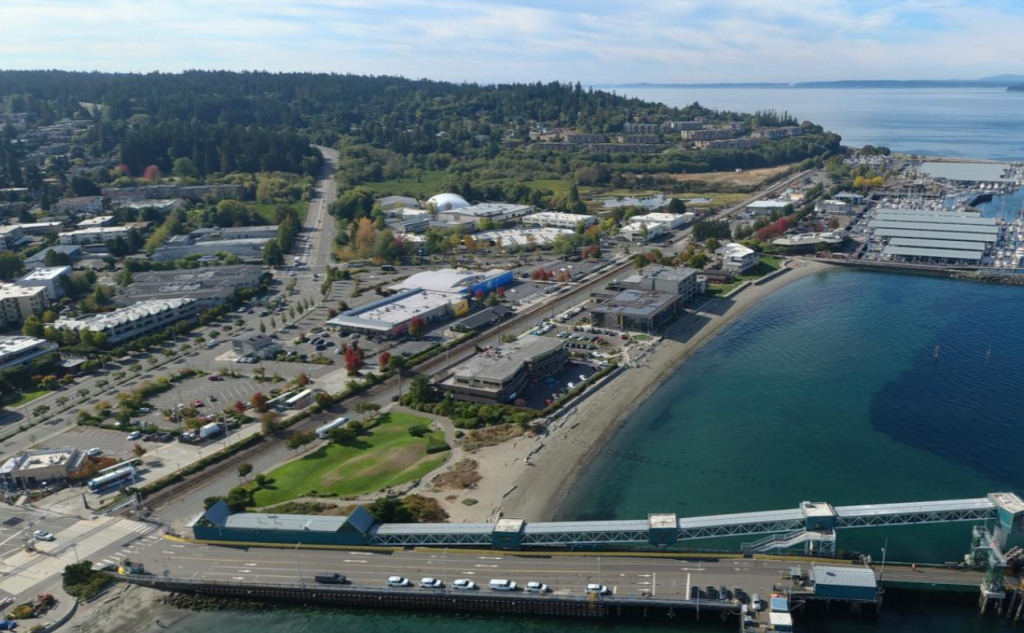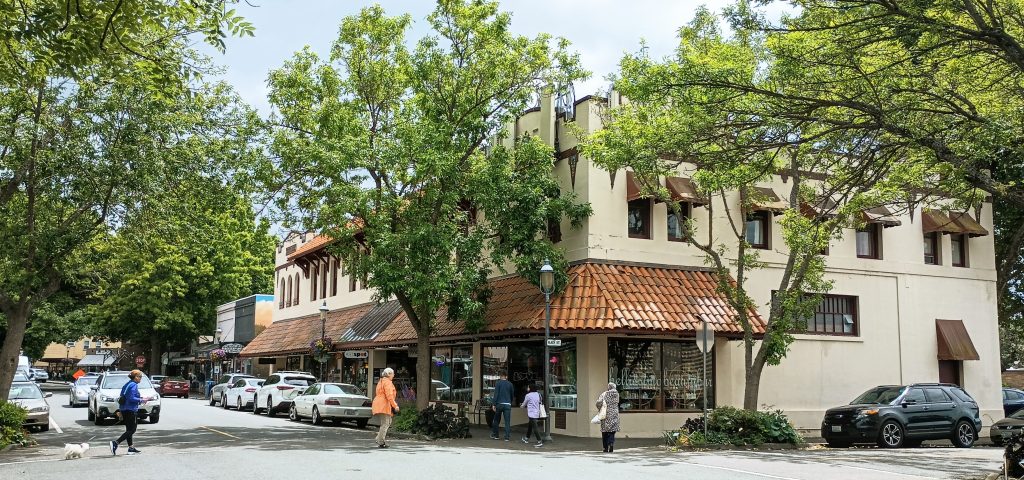
Often a lone voice for housing, Paine makes a pitch for another council term.
In December when the Edmonds City Council pushed back on the state legislature’s push to change single family zoning laws statewide, there was just one vote in opposition of the resolution: Councilmember Susan Paine. The resolution, stating support for “retaining rights to self-determination as it pertains to land use, zoning, building codes and ordinances,” came weeks before House Bill 1110 was introduced and was intended to draw a line in the sand before a legislative session dubbed “the year of housing.”
In its original form, HB 1110 would have required Edmonds to allow up to four units on all residential lots in the city, but the version that ultimately passed scaled back that requirement to two units, in no small part due to opposition from local leaders in cities like Edmonds.
Paine, who was first elected to the Edmonds Council in 2019 and is now seeking a second term, is used to taking lonely votes. Earlier that year, she had been the only councilmember to vote against a motion that rejected a state-offered grant that would have allowed the city to simply study allowing lower density residential uses — the so called “missing middle” housing types that HB 1110 will now be requiring Edmonds to allow — in some neighborhoods in the city. The grant wouldn’t have bound Edmonds to take any action, but was seen by many city residents, and a majority of the council, as symbolic of state intervention in local land use.

But Paine took a different view, pointing out that multifamily housing is currently only allowed on 6% of the land area in Edmonds, a city of 43,000 that’s well positioned for growth, with a state ferry terminal, Sound Transit Sounder rail station, and Community Transit’s Swift bus rapid transit network. In an interview, Paine took a clear-eyed view of the challenges and opportunities facing Edmonds in terms of getting a handle on housing affordability.
“We have the chance to manage this in a way that means a lot for all of us,” Paine said.
Over the next 20 years, Edmonds’ is expected to be able to accommodate around 13,000 new residents, and the current zoning in the city, which largely concentrates future growth along the two state highways that run through Edmonds, State Routes 104 and 99, is expected to fall short by around 4,000 residents. While signaling that low density residential neighborhoods are off limits by pushing back on missing middle housing, the current Edmonds council has also pushed back on new multifamily developments in areas where growth is ostensibly encouraged.

Along SR 99, the council in 2022 approved an emergency ordinance requiring significant setbacks for new housing developments, passed in direct response to a proposal to build a 261-unit building called the Terrace Place. The emergency ordinance threw that project into jeopardy after nearby residents voiced concerns over its bulk and scale. Paine wants to see Edmonds move away from knee-jerk reactions like that.
“I think one of our missed opportunities was to spend a lot of time putting in moratoria, and that’s a failure of governance,” Paine said in a conversation with the Urbanist. “What I’d like to see us do is to find a multifamily design standard and stick with it, rather than stopping development every step of the way. It is a failure of governance. And we have this all within our own control. We should prioritize it.”
Paine’s opponent in the general election, Kevin Fägerstrom, a former Sergeant with the King County Sheriff’s office, has accused her of being a rubber-stamp for legislators in Olympia, and has said his top priority is to maintain the “charm and character” of Edmonds. Diane Buckshnis, one of the council’s most vocal critics of increased density, set to leave her seat in a bid to become Mayor, has endorsed Fägerstrom, a rare move among sitting councilmembers.
Increasing Access to Homelessness Services in Edmonds
Paine also connects the lack of progress increasing housing options in Edmonds with an increase in homelessness in Snohomish County, which will only get worse. “We’re going to have a lot of homegrown unhoused people of all ages, our seniors, our most vulnerable right now, our students are very vulnerable,” Paine said. Last year, Paine was also one of two votes on the council against a bill making it illegal to occupy public spaces in Edmonds overnight, a direct attempt to criminalize anyone who may find themselves homeless in the city. The ordinance was opposed by homelessness service providers and other regional elected officials, including Rep. Strom Peterson (D-21), chair of the House housing committee. “I’d love to see it repealed,” Paine said.
“I said it then, I’ll say it now: it was one of the most unfriendly moves that we could have done for our entire community, with the ban,” Paine said. “We don’t have shelter options…for the last three and a half years, we’ve had five motel rooms on a voucher for six months a piece. And that’s from the Department of Commerce, and that’s going away. We don’t have anything.”
Paine cited Madrona Highlands, a new 27-unit affordable housing building being constructed by the nonprofit, Housing Hope, in south Edmonds as part of a collaboration with Edmonds Lutheran Church, which owns the land where the building is being constructed, as a positive step for providing housing so people in south Snohomish county can exit homelessness.

Improving All of Edmonds’ Neighborhoods

“I’m running for re-election, because we still have a lot to do,” Paine said. “We’re starting to recognize the need for more infrastructure and other equity across all of Edmonds. We’ve been focusing on downtown a lot…and our downtown is doing beautifully, but we have neighborhood commercial districts that don’t have the same level of support.”
Paine sees improving walkability in neighborhoods in Edmonds outside of downtown as a crucial part of providing that support.
“We’re the oldest city in the county. So what that means is that we have really embedded legacy stuff where it hasn’t been well developed. And that’s particularly in the sort of the newer neighborhoods from, say, 1970 and coming forward,” she said. “So getting more sidewalks builds community, which is important. And there’s also some special needs because adding more density in all parts of our neighborhoods means that we have to have infrastructure there to do that.”
She noted improved traffic safety is something residents from all across the city are asking for. Edmonds is moving forward with revamping SR 99 through the city limits, a city-led project aided with state funding. This year, WSDOT and the city announced that the redesign would be modified to make way for protected bike lanes on the corridor, a rarity for a state highway.
If Paine is successful in her bid to continue serving on the council, one thing is clear: She’ll continue to provide a countervailing voice to some of the more conservative instincts that have tended to dominate the conversation in Edmonds, to the benefit of the city’s future residents.
Ryan Packer has been writing for The Urbanist since 2015, and currently reports full-time as Contributing Editor. Their beats are transportation, land use, public space, traffic safety, and obscure community meetings. Packer has also reported for other regional outlets including BikePortland, Seattle Met, and PubliCola. They live in the Capitol Hill neighborhood of Seattle.

